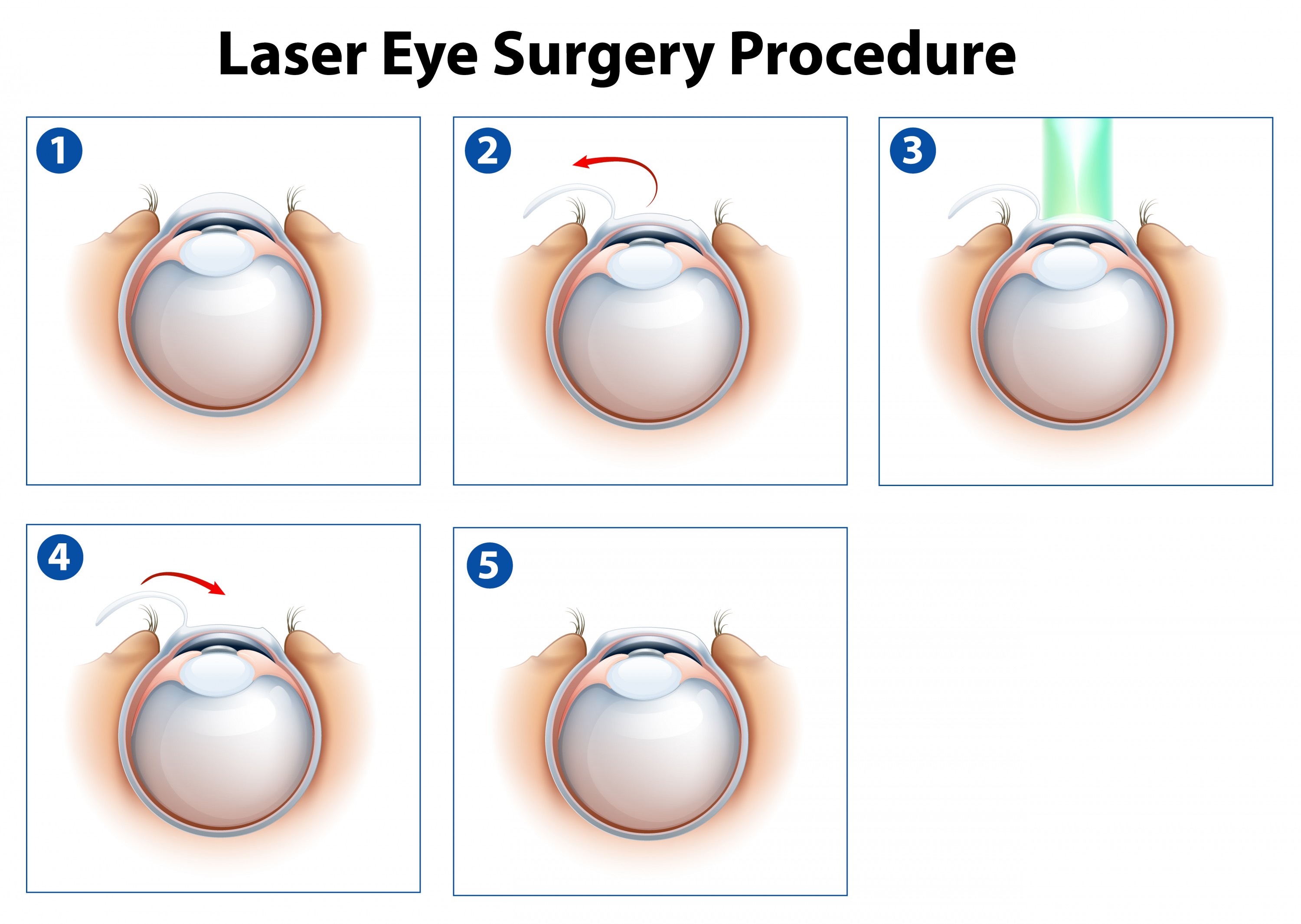Laser surgery is a type of surgery that uses special light beams instead of instruments for surgical procedures. LASER stands for “Light Amplification by the Stimulated Emission of Radiation”. Lasers were first developed in 1960.
Refractive errors are the aberration in vision that occurs when the shape of the eye prevents light from focusing directly on the retina. The length of the eyeball (longer or shorter), changes in the shape of the cornea, or aging of the lens can cause refractive errors (1).
They are –
Myopia (near-sightedness),
Hyperopia (far-sightedness),
Astigmatism (is a condition in which the eye does not focus light evenly onto the retina causing the images to appear blurry and stretched out), and
Presbyopia (age-related condition in which the ability to focus up close becomes more difficult)
Laser eye surgery involves the use of a laser to vaporize parts of the cornea in order to reshape it and correct visual impairments. It’s an effective permanent solution for a range of refractive disorders, including myopia (short-sightedness), hyperopia (long-sightedness) and astigmatism (2).
Laser therapy is a safe and effective alternative to eye drops as a first-line treatment for patients with newly diagnosed primary open-angle glaucoma (3).
The ideal candidate for Laser eye surgery is a person over 18, as before that, the eye might still be changing. Also, the eye prescription needs to have more or less stayed stable for about two years. Lens surgery may be more suitable if one has a high spectacle prescription or later in life (4).
The various types of Laser eye surgery involve three main types: LASIK, SMILE and surface laser treatments (4).
LASIK (laser-assisted in situ keratomileusis) this is done with two lasers, one to open up a thin flap in the surface of the cornea, and another to reshape the cornea underneath.
SMILE – the surgeon reshapes your cornea through a small, self-sealing hole.
Surface laser treatments (PRK, LASEK and TransPRK) – the clear skin covering the cornea is removed so the surgeon can reshape your cornea with a laser (4)
Advantages of laser eye surgery –
Safety – Laser eye surgery is a safe procedure when performed by an expert surgeon on patients who are good candidates for treatment.
Quick- the probable procedure time is around an hour and a half. However, the procedure itself takes around 9-10 minutes for both eyes. It involves a day care procedure.
Painless- anaesthetic eye drops assures a painless procedure. Temporary dry eyes can be dealt with using eye drops that shall act as soothing agents.
Rapid visual recovery- Most patients have improved vision immediately after surgery. Within 4 hours almost all patients have better than 20/20 vision. The results do vary, though, among patients with higher prescriptions (2)
A complete freedom from using contacts or glasses is a major relief and life changing to almost all the patients seeking laser surgery. Also, activities such as swimming become hassle free.
Complications of laser eye surgery are primarily related to suitability. Well selected candidates operated on by an expert surgeon in a low volume setting do well and with a very low risk of complications. However, there are occasional cases met with below complications-
- Glare
- Seeing halos around images
- Difficulty driving at night
- Fluctuating vision
- Dry eyes
References:
- https://nei.nih.gov/health/errors/errors
- https://www.lasereyesurgeryhub.co.uk/laser-eye-surgery-risks-success-rates/
- https://nei.nih.gov/news/pressreleases/gltpressrelease
- https://www.nhs.uk/livewell/eyehealth/pages/lasers.aspx
